Dublin began its descent into the bleak midwinter last week, with clocks winding back and the evenings getting darker, but the city took on the night midweek with the switching on of the Christmas lights. Embracing the Chinese proverb "It's better to light a penny candle than to curse the darkness", the business improvement organisation DublinTown, which funds the attraction, hopes to lure shoppers back into the city centre.
“People’s heads get into Christmas when Halloween is out of the way,” says Richard Guiney, chief executive of DublinTown. “It’s a natural part of the cycle. It gets darker, sharply, as we head into November. These lights provide an outer balance to that darkness. It raises people’s mood.”
Usually, there's €500,000 to pay for the lights, but this year that's down to €350,000. Post-Covid, we all want to see a vibrant capital city
And do we ever need a mood elevator. With Brexit threatening supply chains and Covid threatening the air we breathe, Christmas and the run-up to it is a crucial time for Guiney’s members, who have been hit particularly hard. They have lost about 500 of their 2,500 thousand members. “Businesses are struggling with the pandemic. Trade hasn’t been what it would have been. Usually, there’s €500,000 to pay for the lights, but this year that’s down to €350,000. Post-Covid, we all want to see a vibrant capital city. To make that a reality we need to make sure we support city businesses at this vital time.”
Bricks and mortar shops are competing with people ordering online what they want, when they want and from wherever they want. “As long as that option exists, we need to create an overall experience to make people want to physically come in to get their gifts. The lights, like the choirs and the grottos, are all part of an experience you can’t get on your computer or on your phone. You don’t get that memory, of being in the city centre, amongst the buzz and excitement and goodwill, creating positive associations with your city for you and your children.”
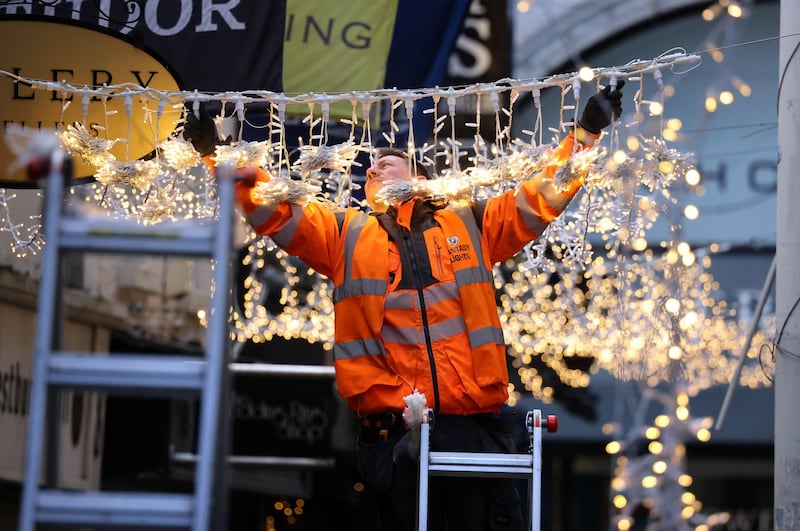
Christmas is the busiest time of the year, with consumer businesses making roughly a third of their annual income in those six weeks. “There is a natural incline in footfall as November begins, with a sharp incline in the last week, particularly around Black Friday. In the last two weeks, it explodes. The last Saturday before Christmas, pre-Covid, saw 600,000 people in the city centre.”
DublinTown has handled the Christmas lights for the city since 2008, during which time it has increased the reach of the spectacle from just three streets to 30. “It was all a bit ad hoc before that. There was a bit of a whip around on the street for the electricity, which some people were only too willing to chip in for, while others were only too willing to let the rest pick up the tab. We’ve cleaned all that up, installing fuse boxes and meters and permanent support structures to support the lights. A large part of our annual expenditure would go on Christmas lights.”
People bring their children in to see the effect it has on the buildings, and themselves. It's hard not to feel jubilant when bathed in all that light
The DublinTown Christmas lights comprise more than one million low-energy LED light bulbs, with 4km of lights in total, spreading out from St Stephen’s Green to Parnell Square. It takes 20 people six weeks to erect the full suite which will remain switched on for 1,000 hours before being taken down after Nollaig na mBán on January 6th. “Even though it gets dark at about 4.30pm, the lights provide illumination so that even though we are in the depths of winter, people bring their children in to see the effect it has on the buildings, and themselves. It’s hard not to feel jubilant when bathed in all that light.”
The DublinTown Christmas lights have proven so popular that they are dangerous. The last time there was a “turning-on ceremony” – in 2017 – they attracted so many people to the event it had to be cancelled as the parade couldn’t fit down O’ Connell Street, and there were crowd safety concerns. “And that was all without a headlining celebrity. It was literally the pull of the lights,” Guiney says.
So what goes into preparing Dublin for its annual Instagram close-up. "As soon as the lights come down the consultations begin for the following year," says Gerard Farrell, operations director for DublinTown. "We talk to businesses, find out what they liked and didn't like. Do they want to keep the design that they have, do those lights need refurbishing, scrapping, whatever. There are trade shows in Europe where we might get some new ideas, or we visit other European cities to see what they are doing. Then we go to different suppliers, asking for designs or proposals. A budget is drawn up and we see what is feasible and what is not."
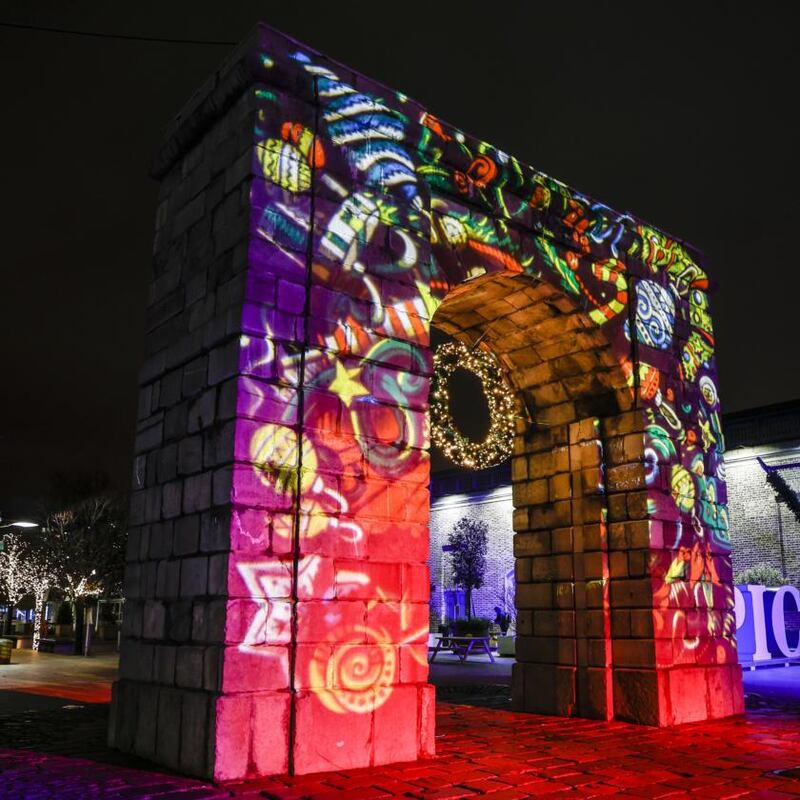
The lights, which are stored in a massive warehouse in Rathcoole, are taken out of storage in early August. “We spend six weeks testing them,” says Colin Dunning of Fantasy Lights, who has been mounting the lights for 18 years. “Finding out what repairs might be needed, not just to the lights but the frames, the metalwork, and the cables that hold the decorations in the air. We make sure the bolts can still support 5 KT of weight and that none of the steel wirings has become frayed.”
From the start of October, the permanent infrastructure on the streets is tested – all the electrical boxes, fuse boards, and permanently fixed bolts attached to the walls of buildings to make sure no damage has been done to them in the past 12 months.
Then the lights are erected. Working 12 hours a night, five nights a week, there is great pressure on Dunning and his men to meet the mid-November deadline. And once they are up, he is on call 24-hours a day throughout December. “We might get called out 10 times over the Christmas period and we try to get the lights fixed within three to four hours of them going on the blink.”
The style of decoration is dictated by the street’s architecture – the width of the street, or the presence of the Luas whose cables bring their own restrictions. Then there is a difference in building height. “You can’t attach a wire from one side to the other when one is a three-storey building and the other is a single-storey,” says Farrell. “So you improvise. On Liffey Street we wrap the trees near the Ha’penny Bridge in lights which makes a really pretty picture”. Johnston Court, which runs along the side of Bewley’s Cafe on Grafton Street, is also particularly popular. “It’s a curtain of lights, and because there are so many jewellery shops there, it glistens, so we see a lot of people posting about their engagements there to social media.”
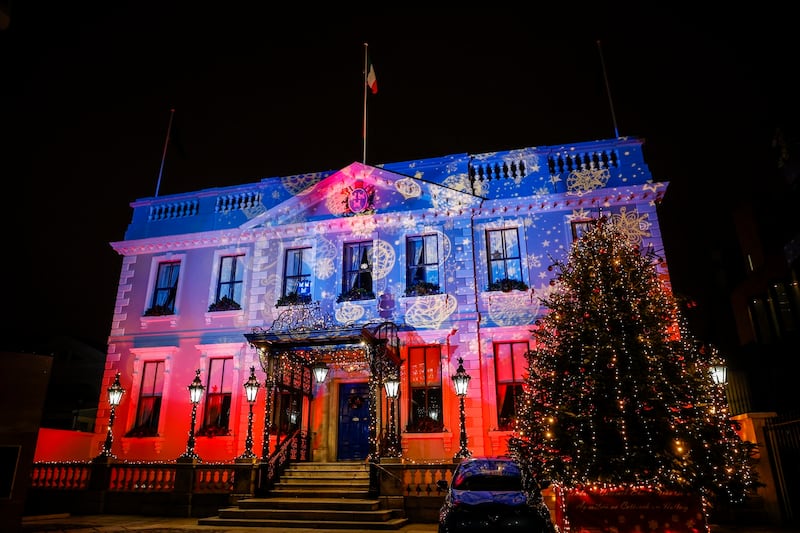
DublinTown is not the only organisation turning the city centre into a welcoming hearth for shoppers. Dublin City Council's festival, Dublin Winter Lights, returns for its fourth year later in November. Transforming the city into a giant lava lamp, 21 locations across the city will be illuminated with colourful projections, lighting displays and animations, including the Custom House, the Samuel Beckett Bridge, the GPO, Trinity College, and the Mansion House.
"When I was a kid, coming into the city to see the Switzers window was a big day out. We don't have that so much any more, " says Simon Clarke from Dublin City Council Events. "So it would be nice if Dublin Winter Lights became something similar, a tradition that today's children will look back fondly on in years to come. Something that helps them engage with their city."
To help facilitate this, they have created two walking trails for people to engage with the art that’s on display. “A lot of these buildings are iconic, they all have a story. To see them lit up like that shows them off in their best light.”
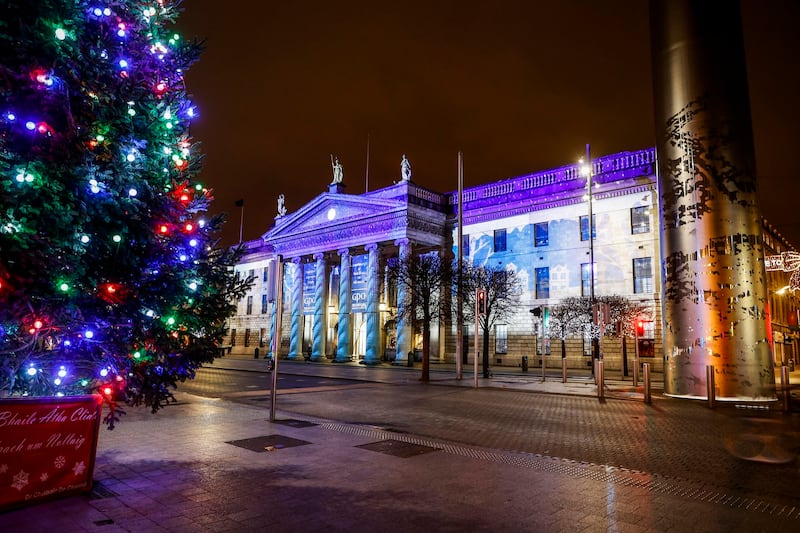
The theme this year is Dublin’s Winter Wildlife, with eight artists commissioned to create dynamic lighting displays at various points around the city with interactive features , immersive lighting displays and traditional festive and coloured tree lighting. In addition, pictures of more than 70 volunteers who kept communities afloat during Covid will be projected on buildings, while children’s artwork will be projected on to Barnardo Square.
Dublin Winter Lights has gone the eco route too and, while it features 157,800 LEDs, 100 tonnes of equipment and 15.78km of cable, they use the latest energy-saving laser projection technology. "So the 24 projectors being used on Smithfield Square draw a total of 13 amps which is the equivalent of a standard domestic socket. The ship sculpture at Sir John Rogerson's Quay is all LED, again running at less than a domestic socket. While the digital projectors at City Hall, Civic Offices, Digital Depot, and Mater Hospital will run at less than 10 amps each," says Clarke.
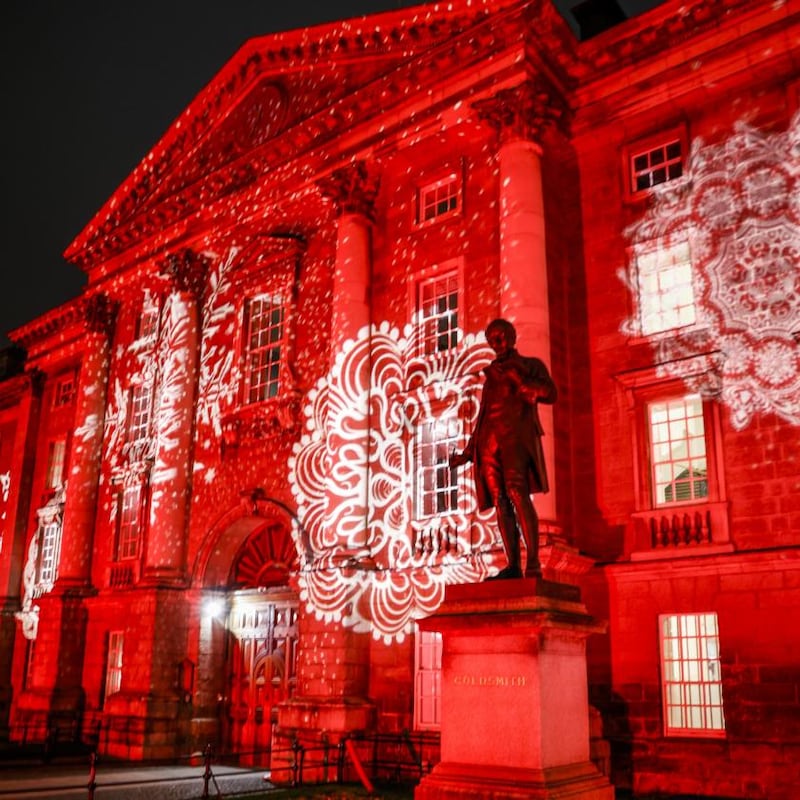
The festival recycles all its materials from year to year, storing all the lighting in wooden crates and avoiding single-use plastics. More significantly, fossil fuel generators are now powered by hydrotreated vegetable oil (HVO). “HVO is made from 100 per cent renewable waste materials and, when compared to regular diesel, it provides 90 per cent reduction in CO2, 30 per cent reduction in nitrogen oxide, and is both biodegradable and odourless.”
But the lights are not just good for the economy and the environment, they are good for our souls.
“Christmas lights are a celebration of brightness,” says Martin Rogan, chief executive of Mental Health Ireland. “It’s a hopeful sign, that goes back to before we had electric light, to ancient civilizations who realised that the year had reached a tipping point, and that we were in the dead of winter. The lights were a recognition that we were entering a more difficult time but that there is a more hopeful time coming. That’s what Christmas lights are designed to signify. The light at the end of the tunnel.”















